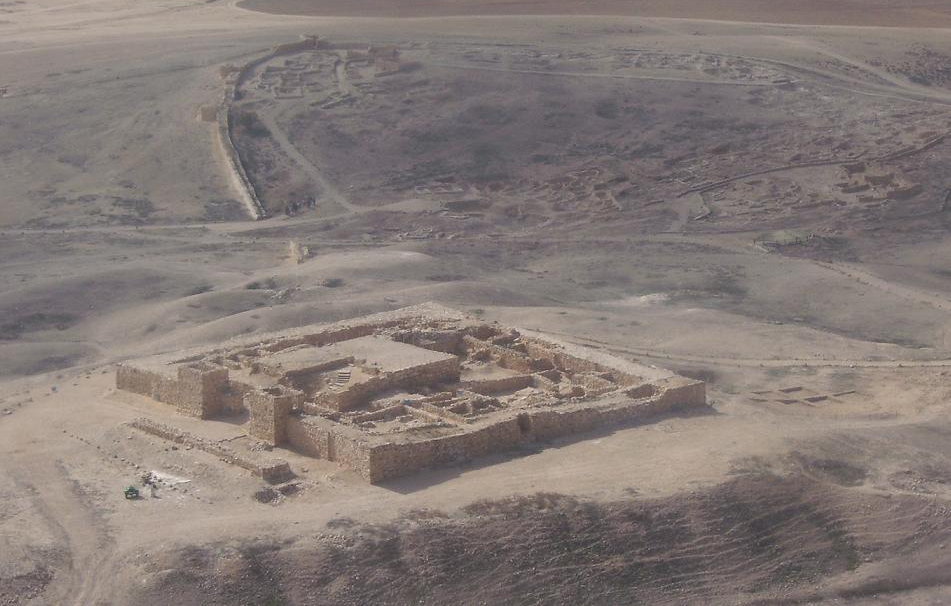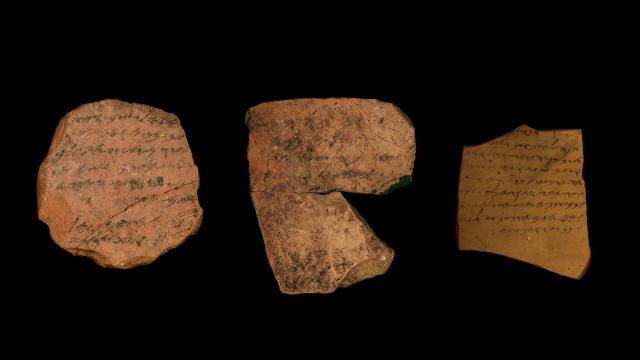Twenty six hundred years ago, a band of Judahite soldiers kept watch on their kingdom’s southern border in the final days before Jerusalem was sacked by Nebuchadnezzar. They left behind numerous inscriptions — and now, a groundbreaking digital analysis has revealed how many writers penned them. The research and innovative technology behind it stand to teach us about the origins of the Bible itself.
“It’s well understood that the Bible was not composed in real time but was probably written and edited later,” Arie Shaus, a mathematician at Tel Aviv University told Gizmodo. “The question is, when exactly?”
Shaus is one of several mathematicians and archaeologists trying to broach that question in a radical manner: by using machine learning tools to determine how many people were literate in ancient times. Their first major analysis, which appears today in the Proceedings of the National Academies of Sciences, suggests that the ability to read and write was widespread throughout the Kingdom of Judah, setting the stage for the compilation of Biblical texts.
Although parts of this conclusion remain controversial, the technology behind the study could revolutionise our understanding of literacy and education in Biblical times.
Most scholars agree that the earliest Biblical texts — including the Book of Joshua, Judges and the two Books of Kings — took shape during what’s known as the late First Temple Period, before Jerusalem fell to the Babylonian king in 586 BCE. But the circumstances surrounding the writing of these texts, including when they were first penned and by how many authors, remain unclear. Curiously enough, texts that have nothing to do with the Bible may shed light on the matter.

Aerial view of the Tel arad fortress, where the inscriptions used in the present study originated. Image: Wikimedia
For instance, during this time period people wrote a wide variety of information down on ceramic pottery shards called ostraca. “These texts are very mundane in nature,” Shaus said, citing military commands and supply orders as some of the more popular topics of discussion.
Aside from how much wine Judahite soldiers required, however, there’s another layer of information we can extract from ostraca: how many people knew how to write. That’s exactly what Shaus and his colleagues did, analysing a group of 16 well-preserved ceramic shards from a remote military fortress located near the southern border of Judah. Most of these ostraca date to around 600 BCE, practically the eve of the kingdom’s fall.
The first step of this analysis involved the researchers using novel image processing tools to restore characters that had been partially rubbed away. They then developed machine learning algorithms that could compare and contrast the shape of the ancient Hebrew characters in order to identify statistically distinct handwritings. In principle, this is similar to the algorithms tech companies use for digital signature detection.
“Handwriting analysis is a big area that’s seen a lot of research in recent years,” Shaus said. “Nevertheless, we had to develop our own tools and this was quite challenging. The medium is very deteriorated and so is the writing.”
Eventually, the team devised a handwriting recognition tool that worked beautifully on modern Hebrew, and they decided to put it to the test on ancient inscriptions. All in all, their analysis revealed at least six different authors behind the 16 ostraca. Examining the contents of the text itself, the researchers concluded that these authors spanned the entire military chain of command. “The commander down to the lowest water master could all communicate in writing,” Shaus said. “This was an extremely surprising result.”
It’s a result that the researchers say points to a “proliferation of literacy” throughout Judahite society by 600 BCE, implying that the educational infrastructure to support Bible writing almost certainly existed.
But not everyone is comfortable with all aspects of this conclusion.
“This is a highly innovative and important study,” Christopher Rollston, an expert on archaeology and Bible studies at George Washington University told Gizmodo, noting that there’s ample archaeological evidence portions of the Bible were written as early as 800 BCE. But who was really able to write at that time?
“I think that literacy was confined to elites, basically scribes, high military officials, and priests,” Rollston said, adding that by the late First Temple Period, it’s possible reading and writing had spread to more of this upper class.
Perhaps the most important aspect of Shaus’ work is the introduction of sophisticated image recognition technology to the study of ancient texts. The Tel Aviv research group is keen to share their tools for reconstructing letters and deciphering handwriting with other archaeologists. By applying these methods more broadly, we might be able to hone in on when, where and by whom history’s most enduring book was first written down.
“We’re bringing new evidence to the game,” Shaus said. “Now, we’ll see what else comes out.”
Top: Inked inscriptions from the fortress of Arad, located in southern Judah. Image: Michael Cordonsky / Tel Aviv University / Israel Antiquities Authority
